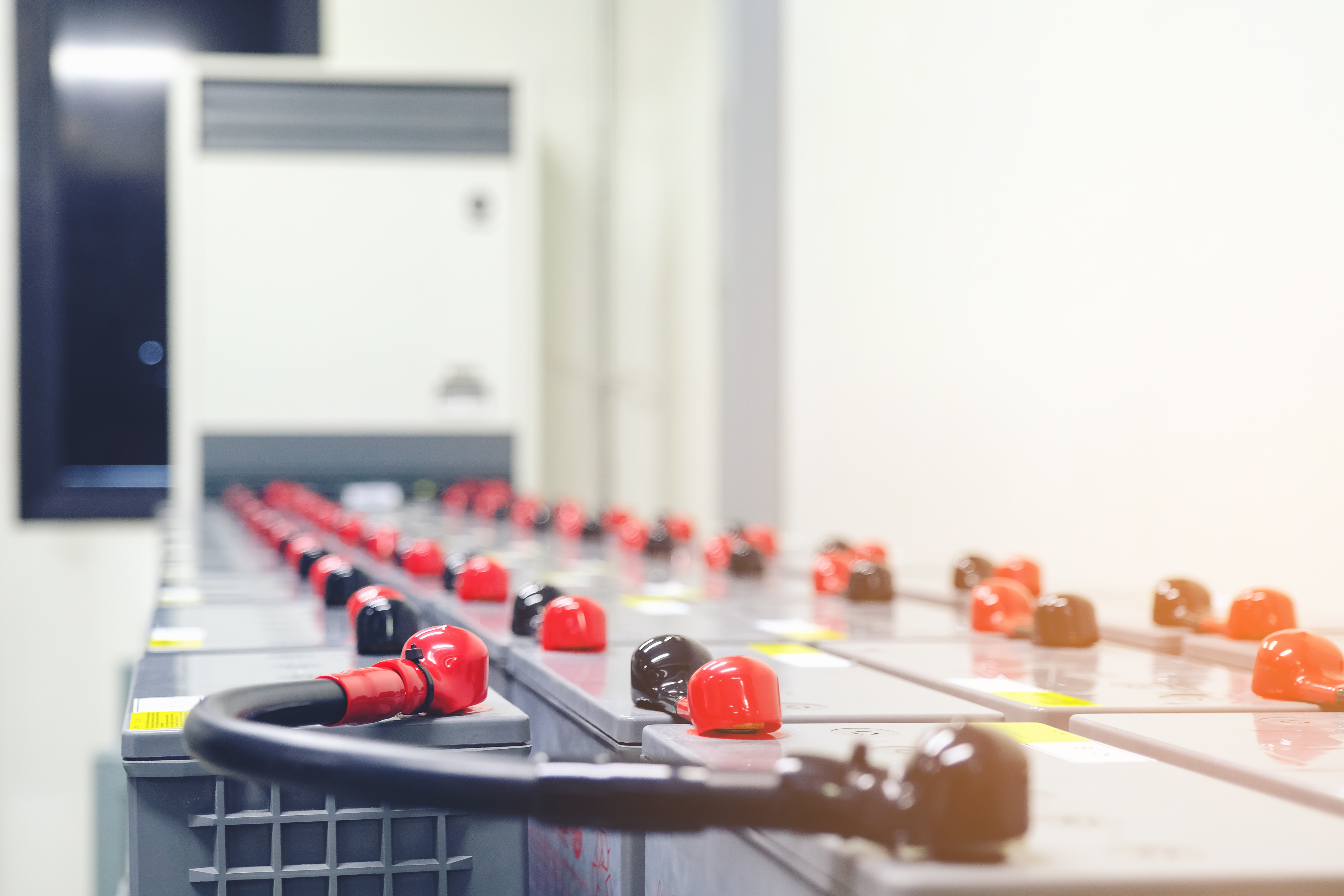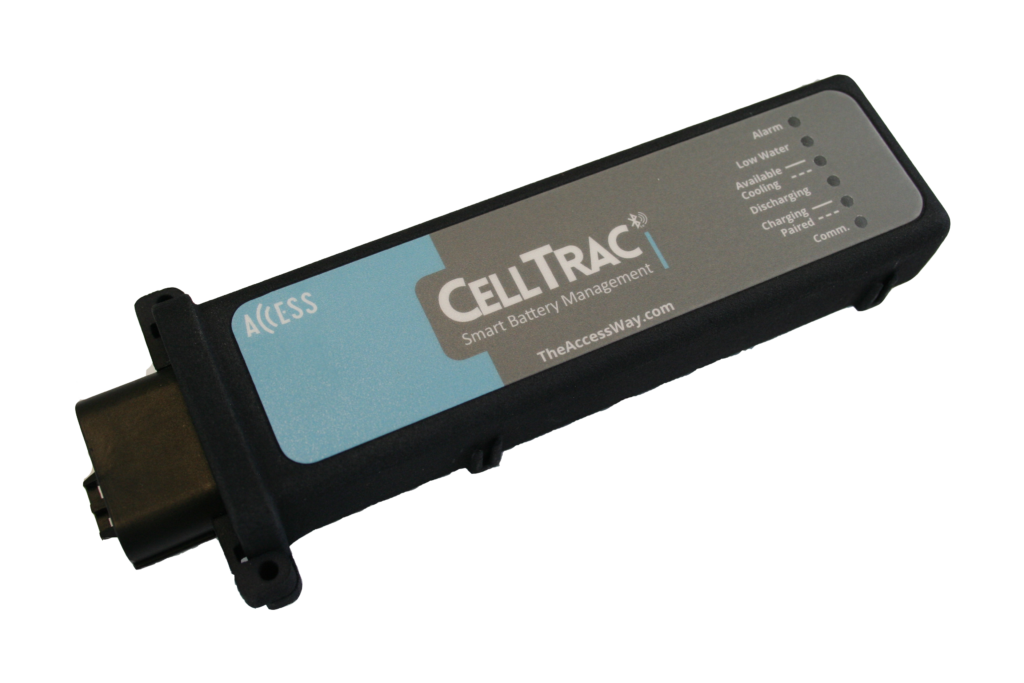A Comparison: Lead Acid Vs. Lithium Ion Batteries
There are two types of batteries commonly used on electric vehicles and powered equipment –- lithium ion and lead acid. It is essential for a fleet manager to know how each battery works as well as their advantages and disadvantages when it comes to deciding which one to use in a company’s fleet.
How Batteries Work
 As a fleet manager, you probably know that a battery works due to an electrochemical process that takes place within it. Most batteries, including lithium ion and lead acid, feature an anode, a cathode and an electrolyte.
As a fleet manager, you probably know that a battery works due to an electrochemical process that takes place within it. Most batteries, including lithium ion and lead acid, feature an anode, a cathode and an electrolyte.
When a battery is active, an electric current flows into the anode, which is the positive terminal of the battery, and flows out through the cathode, which is the negative terminal. The chemistry between the anode and cathode provides the electric current with its charge. However, if the anode and the cathode come in contact with one another, then there would be a short circuit. To ensure this does not happen, a third substance, electrolyte, is required.
Lead Acid Batteries
Lead acid is one of the oldest styles of batteries that are rechargeable. Introduced during the mid-19th century, they have one of the lowest energy-to-weight and energy-to-volume battery designs ever.
How Lead Acid Batteries Work
Lead acid batteries get their name from the fact that the anode and the cathode of a lead acid battery are made of lead or lead dioxide. An electrolyte consisting of sulfuric acid is between them. When the battery releases electricity, a chemical reaction occurs that gradually converts both the anode and the cathode into lead sulfate. Recharging the battery partially reverses the conversion.
Lead Acid Battery Pro’s
– They have a very high surge-to-weight ratio permitting it to deliver a large burst of electricity all at once, making them ideal for supplying energy to a starter of electric vehicles.
– Lead Acid Batteries are inexpensive to produce, making them an affordable option.
– They can work with good capacity over several years.
Lead Acid Battery Con’s
– As a result of the low energy-to-weight and energy-to-volume ratios, they can be very large and heavy.
– They can lack a steady, low or middling supply of electricity over a long period of time.
– They require a lot of time to recharge, resulting in increased vehicle downtimes.
– When exposed to extreme temperatures, especially heat, their lifetime can be shortened
– They require a cool down period after charging, which can also increase vehicle downtimes.
– If a battery is filled with too much water then that can cause a loss of electrolyte and reduce the lifespan of the battery. Excessive water can also lead to corrosion that can cause an uneven charge, also reducing the lifespan of the battery.
Lithium-Ion Batteries
Lithium ion batteries feature a high power-to-weight and power-to-volume ratio making them ideal for energizing smaller electronic products like laptop computers and smartphones as well as electric powered equipment.
How Lithium Ion Batteries Work
A lithium ion battery uses an assortment of substances that has lithium as a common element. The solution is situated between a graphite anode and a cathode that is made of either lithium cobalt oxide, lithium iron phosphate, lithium manganese oxide, or other lithium-based substance. The electrolyte in this battery is commonly a mixture of lithium salt in an organic solvent. The chemical reaction that occurs when lithium migrates between the electrodes produces the electricity. The electrolyte reverses the migration of lithium to recharge the battery.
Lithium Ion Battery Pro’s
– These batteries can be charged quickly, making them ideal for electric vehicles used in a number of shifts per day.
– They are designed to receive partial charges that make them safer and assists in prolonging the overall life of the battery.
– When charged for one hour, a typical lithium-ion battery will run for eight hours, allowing for the electric vehicle or electric powered equipment it is energizing to be used continuously through a 24-hour shift.
– Down time in which the battery needs to be recharged is minimal, allowing for fleet managers to schedule charging during non-working hours such as lunch breaks or between shifts
– They can tolerate extreme temperatures, making them ideal for outdoor usage.
Lithium Ion Battery Con’s
– These batteries are expensive to manufacture, making them a more sizeable upfront investment
– Their charge will continue to decline even if the device it is energizing is off
– Their charge levels need to be very closely regulated as the charge should never be allowed to drop to zero or to an extremely low level. Should this occur, circuits that protect the battery could shutdown. Moreover, a crystalline mass could develop in the battery if it is allowed to discharge to extremely low levels.
– Even when stored, the battery should always have about a 40 percent to 50 percent state of charge.
 Access offers telemetric devices that monitor batteries in fleet vehicles to ensure longer life. Our CellTrac sensor monitors water and electrolyte levels and alerts fleet managers in real-time if water or electrolyte levels drop too low. In addition, CellTrac will send an alarm if the battery charge level drops below a set range.
Access offers telemetric devices that monitor batteries in fleet vehicles to ensure longer life. Our CellTrac sensor monitors water and electrolyte levels and alerts fleet managers in real-time if water or electrolyte levels drop too low. In addition, CellTrac will send an alarm if the battery charge level drops below a set range.
To support our battery monitoring devices, we offer a cloud application, AssetPro360, that connects to CellTrac to display crucial battery data like water levels, state of charge (SoC), temperature and electrolyte levels in order to make sure you are following the proper ongoing battery maintenance program to ensure the life of the battery.
To learn more about the CellTrac or AssetPro360 devices visit the Access Website or contact an Access representative.
